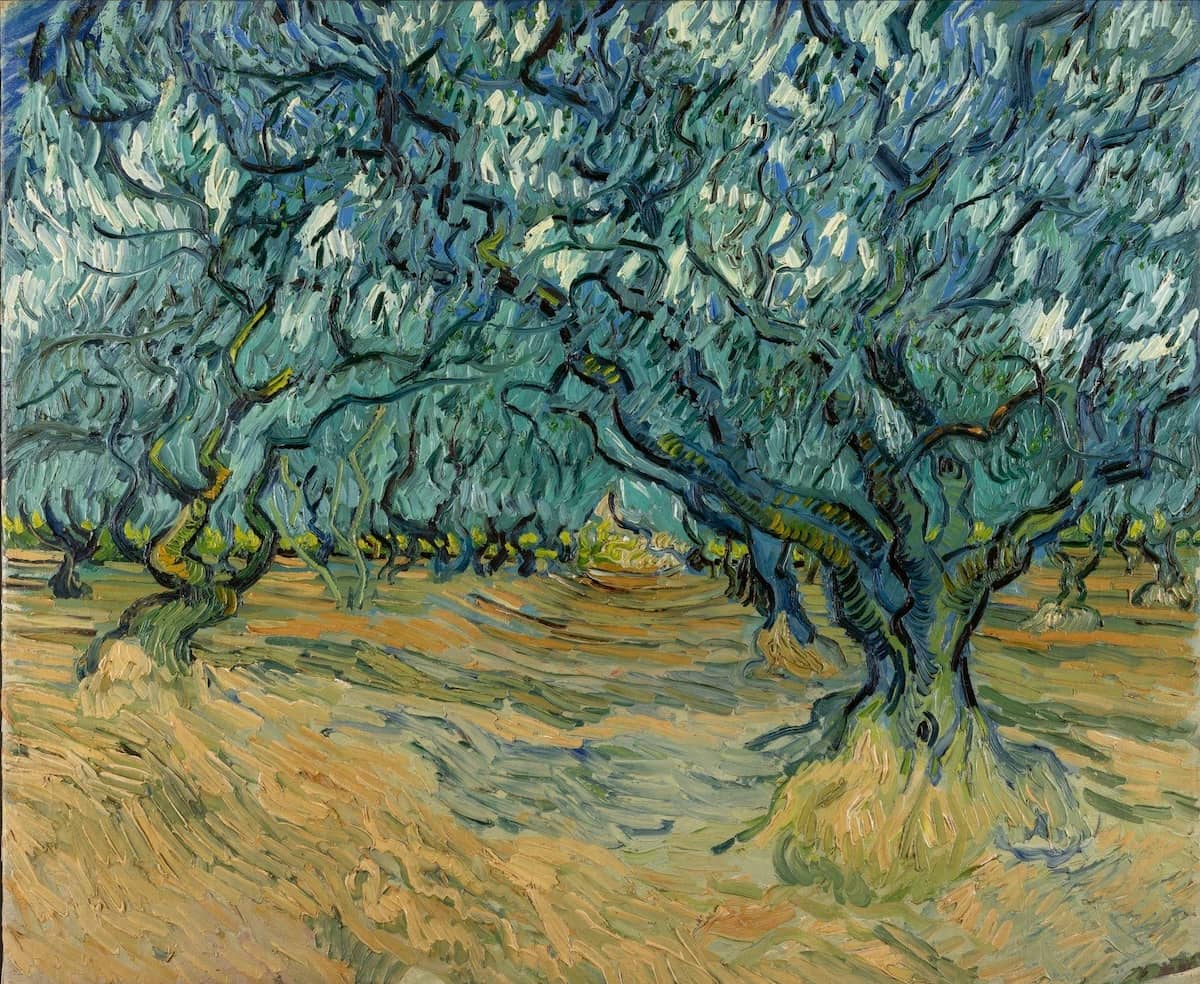The Olives in Autumn, 1889 by Vincent van Gogh

The Olives in Autumn was painted after Van Gogh had moved to the asylum at Saint-Remy following his mental breakdown in Aries in the winter of 1888. Although the artist had had a long history of mental illness that had manifested itself in his erratic behaviour and difficult nature, it was from this point onwards that his condition worsened dramatically and he became increasingly ill.
Vincent van Gogh was drawn to the naturally curved and gnarled forms of these olive trees that he painted often during his stay al the asylum, and has treated the entire canvas with an undulating crescendo of sinuous line. In a similar manner to his late Aries works he hos employed flat areas of colour, but has taken this as his starting point, and has enlivened the surface with strokes of point that become almost decorative. There is great continuity through the canvas with the Alpilles mountains behind the trees echoing their rounded form, as do the clouds and the contours of the ground. The work is highly stylized and defined by his use of heavy line, which calls to mind the Japanese woodcuts that he was so fond of.




















